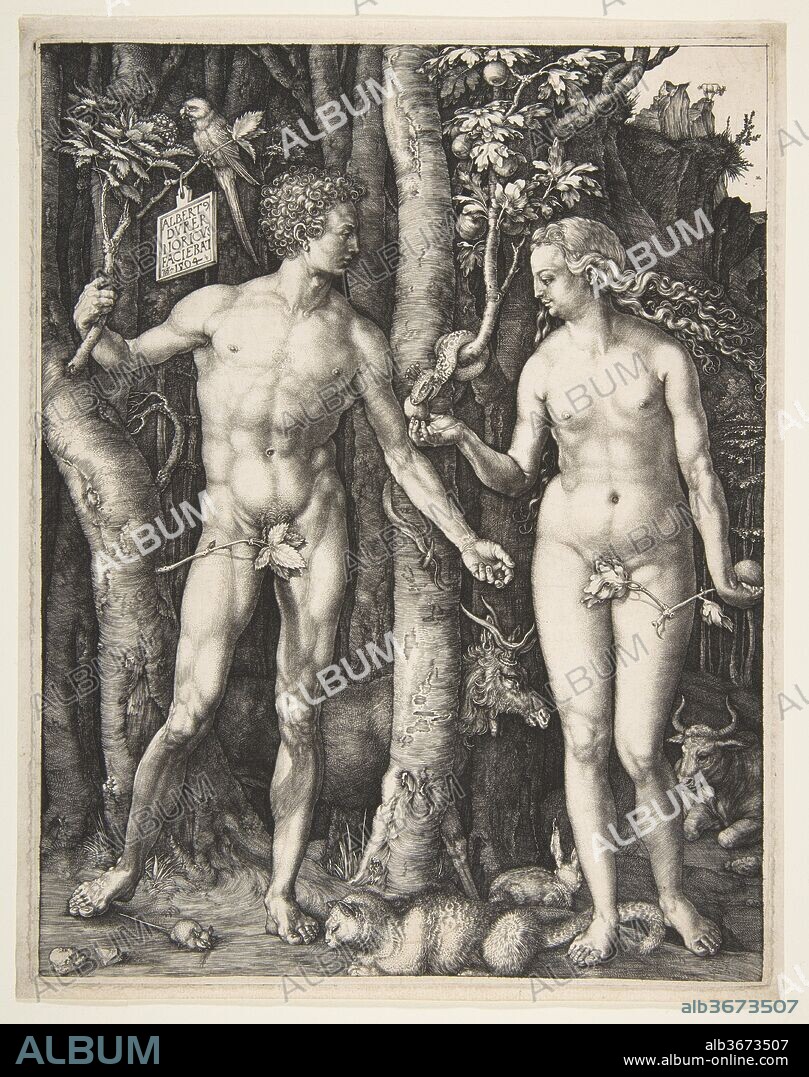alb3673507
ALBERTO DURERO. ADAM AND EVE

|
Añadir a otro lightbox |
|
Añadir a otro lightbox |



¿Ya tienes cuenta? Iniciar sesión
¿No tienes cuenta? Regístrate
Compra esta imagen.
Selecciona el uso:

Título:
ADAM AND EVE
Descripción:
Traducción automática: Adán y Eva. Artista: Albrecht Dürer (alemán, Nuremberg 1471-1528 Nuremberg). Dimensiones: 9 7/8 x 7 7/8 pulg. (25,1 x 20 cm). Fecha: 1504. A lo largo de su vida, Durero estuvo cautivado por la idea de que la forma humana perfecta correspondía a un sistema de proporciones y medidas y podía generarse utilizando dicho sistema. Cerca del final de su vida, escribió varios libros que codificaban sus teorías, incluido Underweysung der Messung (Manual de medición), publicado en 1525, y Vier Bücher von menschlichen Proportion (Cuatro libros de proporción humana), publicado en 1528 justo después de su muerte. muerte. La fascinación de Durero por la forma ideal se manifiesta en Adán y Eva. El primer hombre y la primera mujer se muestran en poses idealizadas casi simétricas: cada uno con el peso sobre una pierna, la otra pierna doblada y cada uno con un brazo ligeramente inclinado hacia arriba desde el codo y algo alejado del cuerpo. La figura de Adán recuerda al Apolo Belvedere helenístico, excavado en Italia a finales del siglo XV. Los primeros grabados de la escultura no se realizaron hasta mucho después de 1504, pero Durero debió ver un dibujo de la misma. Durero era un maestro completo del grabado en 1504: la piel humana y de serpiente, la piel de animales y la corteza y las hojas de los árboles se representan de manera distintiva. La rama que sostiene Adán es del fresno de montaña, el Árbol de la Vida, mientras que la higuera, de la que Eva ha partido una rama, es del prohibido Árbol del Conocimiento. Cuatro de los animales representan la idea medieval de los cuatro temperamentos: el gato es colérico, el conejo sanguíneo, el buey flemático y el alce melancólico.
Adam and Eve. Artist: Albrecht Dürer (German, Nuremberg 1471-1528 Nuremberg). Dimensions: 9 7/8 x 7 7/8in. (25.1 x 20cm). Date: 1504.
Throughout his life, Dürer was in thrall to the idea that the perfect human form corresponded to a system of proportion and measurements and could be generated by using such a system. Near the end of his life, he wrote several books codifying his theories, including the Underweysung der Messung (Manual of measurement), published in 1525, and Vier Bücher von menschlichen Proportion (Four books of human proportion), published in 1528 just after his death. Dürer's fascination with ideal form is manifest in Adam and Eve. The first man and woman are shown in nearly symmetrical idealized poses: each with the weight on one leg, the other leg bent, and each with one arm angled slightly upward from the elbow and somewhat away from the body. The figure of Adam is reminiscent of the Hellenistic Apollo Belvedere, excavated in Italy late in the fifteenth century. The first engravings of the sculpture were not made until well after 1504, but Dürer must have seen a drawing of it. Dürer was a complete master of engraving by 1504: human and snake skin, animal fur, and tree bark and leaves are rendered distinctively. The branch Adam holds is of the mountain ash, the Tree of Life, while the fig, of which Eve has broken off a branch, is from the forbidden Tree of Knowledge. Four of the animals represent the medieval idea of the four temperaments: the cat is choleric, the rabbit sanguine, the ox phlegmatic, and the elk melancholic.
Técnica/material:
engraving
Museo:
Metropolitan Museum of Art, New York, USA
Crédito:
Album / Metropolitan Museum of Art, NY
Autorizaciones:
Tamaño imagen:
3169 x 4011 px | 36.4 MB
Tamaño impresión:
26.8 x 34.0 cm | 10.6 x 13.4 in (300 dpi)
Palabras clave:
 Pinterest
Pinterest Twitter
Twitter Facebook
Facebook Copiar enlace
Copiar enlace Email
Email
